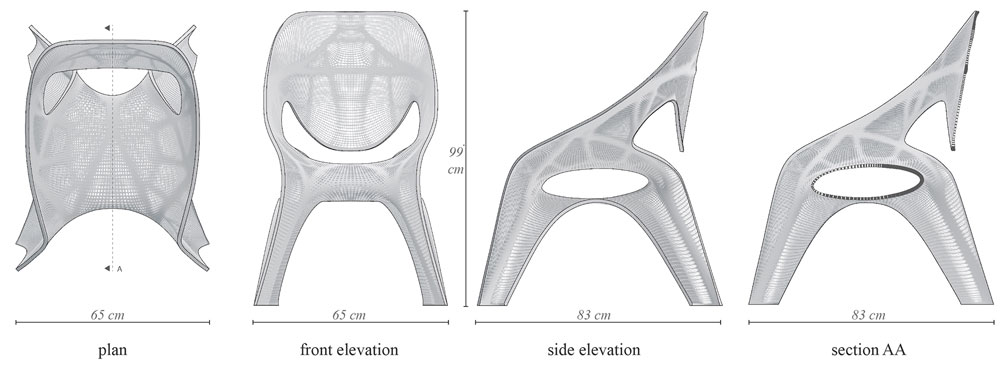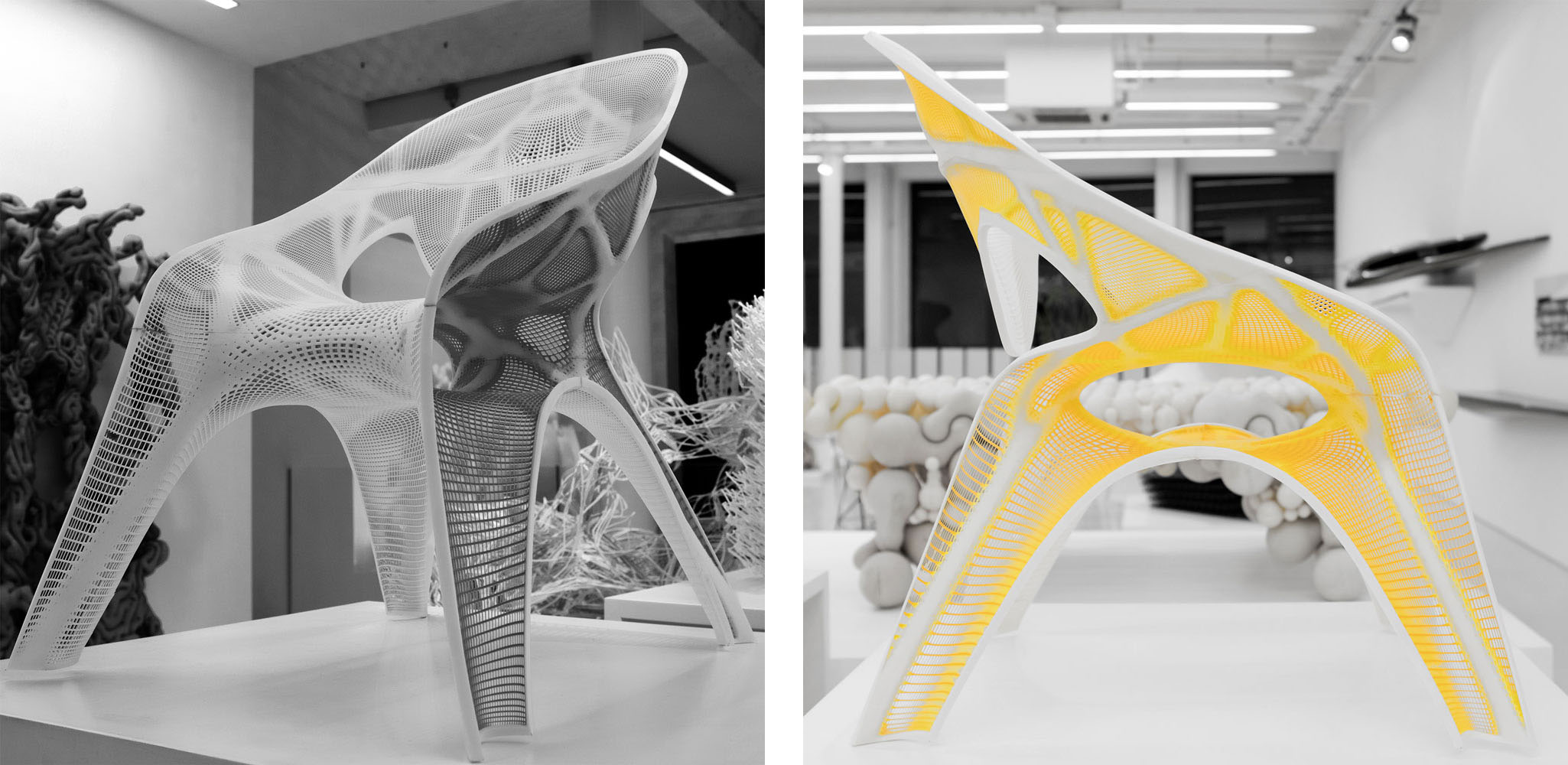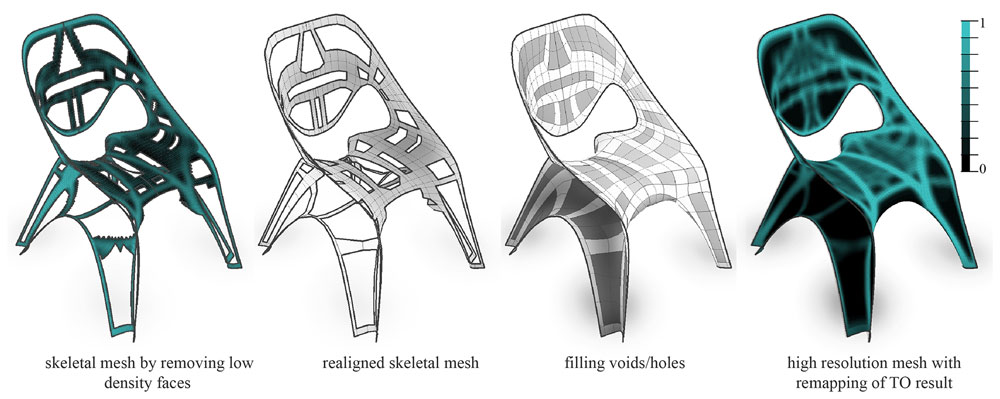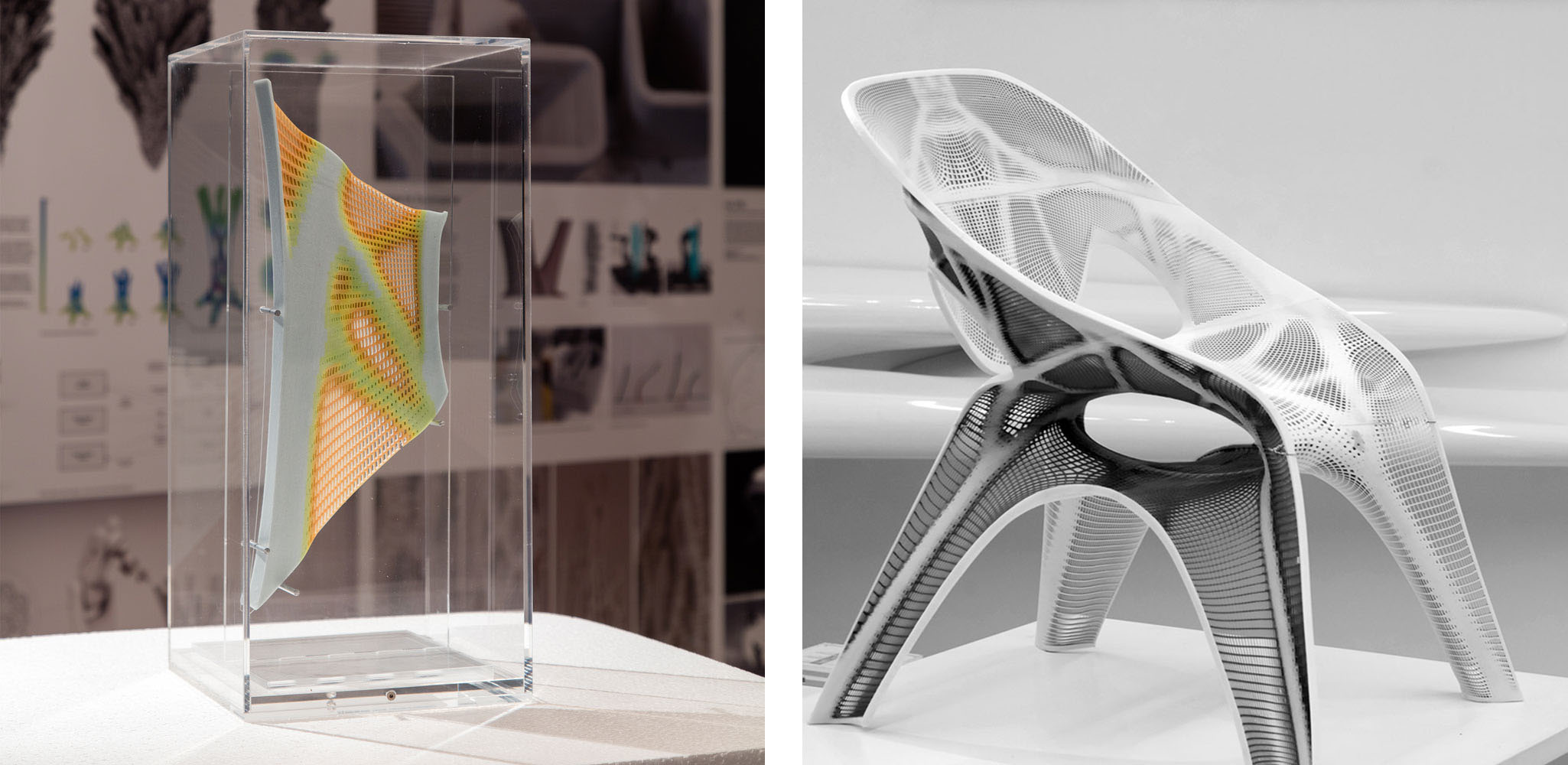In 2016, Zaha Hadid and its Computation and Design research group (Zaha Hadid co|de) collaborated with Stratasys – a renown 3D printing company – to research the potential of 3D printing and topology optimization for their projects. They conducted a study for the design and fabrication of a 3D printed chair. To optimize and ensure feasibility of their design, they applied topology optimization methods using Altair HyperWorks, a software suite for computer-aided engineering, and worked with Altair Engineering to integrate advanced optimization techniques into their workflow.

By integrating 3D printing and topology optimization into the design workflow early on, new complex shapes become feasible thus driving innovation in architectural processes.
The design atelier of Zaha Hadid, founded in 1979, is one of the world’s most innovative architecture studios and an early pioneer of innovative design. The Computation and Design research group (co|de) of the company investigates new design and construction methods to solve architectural problems, exploring various simulation and design techniques as well as software. Today, Zaha Hadid co|de consists of 10 people, with deep knowledge of advanced simulation and design tools.
Pillars of Innovation at Zaha Hadid co|de
At Zaha Hadid, innovation combines three key aspects: geometry, structure, and fabrication. To find the right structure and geometry, Zaha Hadid uses state-of-the-art form-finding tools and technologies and continuously works on integrating these tools and methods into their design language.
The design study of the 3D printed chair was conducted to explore the use of 3D printing to produce quick prototypes of design iterations. For this project, the co|de team also decided to use Altair HyperMesh™ and Altair OptiStruct™ to integrate topology optimization into their design processes. Zaha Hadid’s primary goal with topology optimization was to get rid of material where it was not required, and as a result, reduce the weight of the structure.

Structural Form-finding Cuts Weight by 50%
As the chair was their first project in which they used the Altair HyperWorks platform, they turned to Altair and its simulation experts who helped them with the application of the CAE (Computer Aided Engineering) tools. In collaboration with the Altair team, a new workflow was developed and integrated, including an Altair HyperWorks custom workflow plug-in for the ZHA team’s standard design environment. The design process follows a two-step optimization process with the following iterative workflow: First, a geometrical model is generated in the design tool. Then, the meshing and optimization is set up in a custom workflow plug-in. Subsequently, a topology optimization analyses in Altair OptiStruct is performed. In the next step, the geometry is rationalized and re-meshed to produce a structurally efficient geometry.

As a result, the optimized design geometry was more functional and stable while material requirements were cut down. Thanks to topology optimization, Zaha Hadid was able to reduce the overall weight of the chair by 50 percent. The new special workflow and custom plugin helped the designers to fully benefit from OptiStruct topology optimization analyses very early in the design process without having to leave their design interface, thus driving form-finding and innovation.

Enhancements ahead: HyperWorks for future projects
The Zaha Hadid team has always been committed to pushing its design boundaries to the limits. Their approach is to work with structural and fabrication constraints early on to reduce risk of structural inefficiency and costs. The information feedback about structure and fabrication they receive from Altair HyperWorks at an early design stage is very important to co|de. The topology optimization results obtained with Altair OptiStruct are forming the basis for the design, just like a blueprint, on which the team can build its design language on. Once an initial design has been finalized, it is verified by a structural engineer before moving forward into fabrication. Using the Altair tools, they can inform their design internally and understand what needs to be changed, hence they are able to reduce iteration cycles with the structural engineers.
With the help from Altair, Zaha Hadid improved their CAE knowledge and integrated optimization into their workflow, and with this success, the team is now planning to use the Altair HyperWorks platform and methods such as topology optimizations and 3D printing in larger scale projects and throughout its architectural offices, driving innovation even further.
 Download Customer Story
Download Customer Story